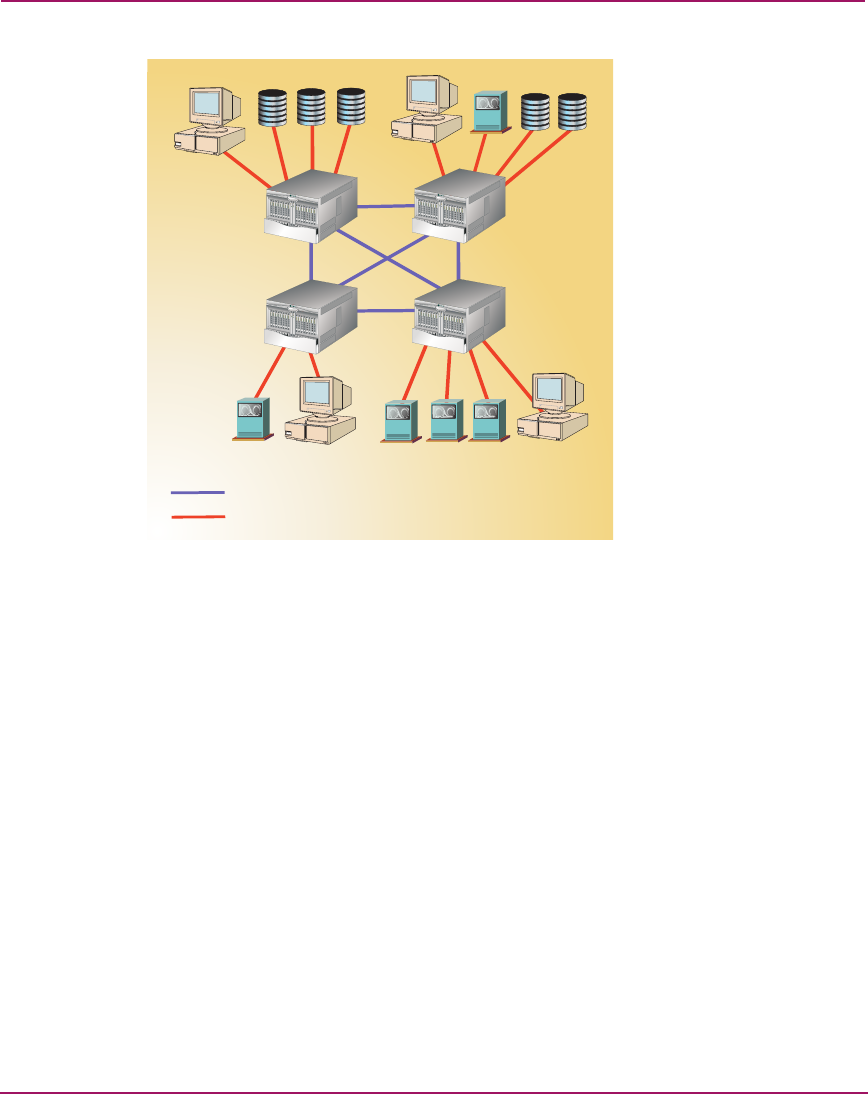FW V06.XX/HAFM SW V08.02.00 HP StorageWorks SAN High Availability Planning Guide (AA-RS2DD-TE, July 2004)
Table Of Contents
- SAN HA Planning Guide
- Contents
- About this Guide
- Introduction to HP Fibre Channel Products
- Product Management
- Planning Considerations for Fibre Channel Topologies
- Fibre Channel Topologies
- Planning for Point-to-Point Connectivity
- Characteristics of Arbitrated Loop Operation
- Planning for Private Arbitrated Loop Connectivity
- Planning for Fabric-Attached Loop Connectivity
- Planning for Multi-Switch Fabric Support
- Fabric Topologies
- Planning a Fibre Channel Fabric Topology
- Fabric Topology Design Considerations
- FICON Cascading
- Physical Planning Considerations
- Port Connectivity and Fiber-Optic Cabling
- HAFM Appliance, LAN, and Remote Access Support
- Inband Management Access (Optional)
- Security Provisions
- Optional Features
- Configuration Planning Tasks
- Task 1: Prepare a Site Plan
- Task 2: Plan Fibre Channel Cable Routing
- Task 3: Consider Interoperability with Fabric Elements and End Devices
- Task 4: Plan Console Management Support
- Task 5: Plan Ethernet Access
- Task 6: Plan Network Addresses
- Task 7: Plan SNMP Support (Optional)
- Task 8: Plan E-Mail Notification (Optional)
- Task 9: Establish Product and HAFM Appliance Security Measures
- Task 10: Plan Phone Connections
- Task 11: Diagram the Planned Configuration
- Task 12: Assign Port Names and Nicknames
- Task 13: Complete the Planning Worksheet
- Task 14: Plan AC Power
- Task 15: Plan a Multi-Switch Fabric (Optional)
- Task 16: Plan Zone Sets for Multiple Products (Optional)
- Index

Planning Considerations for Fibre Channel Topologies
94 SAN High Availability Planning Guide
Figure 38: Full mesh fabric
Full-mesh fabrics provide increased resiliency over cascaded or ring fabrics and
are well suited for applications that require any-to-any connectivity. If a single
ISL fails, traffic is automatically routed through an alternate path.
Mesh fabrics also form effective backbones to which other SAN islands can be
connected. Traffic patterns through the fabric should be evenly distributed, and
overall bandwidth consumption is low.
When using low port-count fabric elements, mesh fabrics are best used when the
fabric is not expected to grow beyond four or five switches. The cost of ISLs
becomes prohibitive for larger mesh fabrics. In addition, full-mesh fabrics do not
scale easily because the addition of a switch requires that at least one additional
ISL be added from every existing switch in the fabric. If less than four fabric
elements are used in a full-mesh fabric:
■ A two-switch full mesh fabric is identical to a two-switch cascaded fabric.
■ A three-switch full mesh fabric is identical to a three-switch ring fabric.
T
M
T
M
T
M
T
M
Interswitch Link
Fabric Connection










